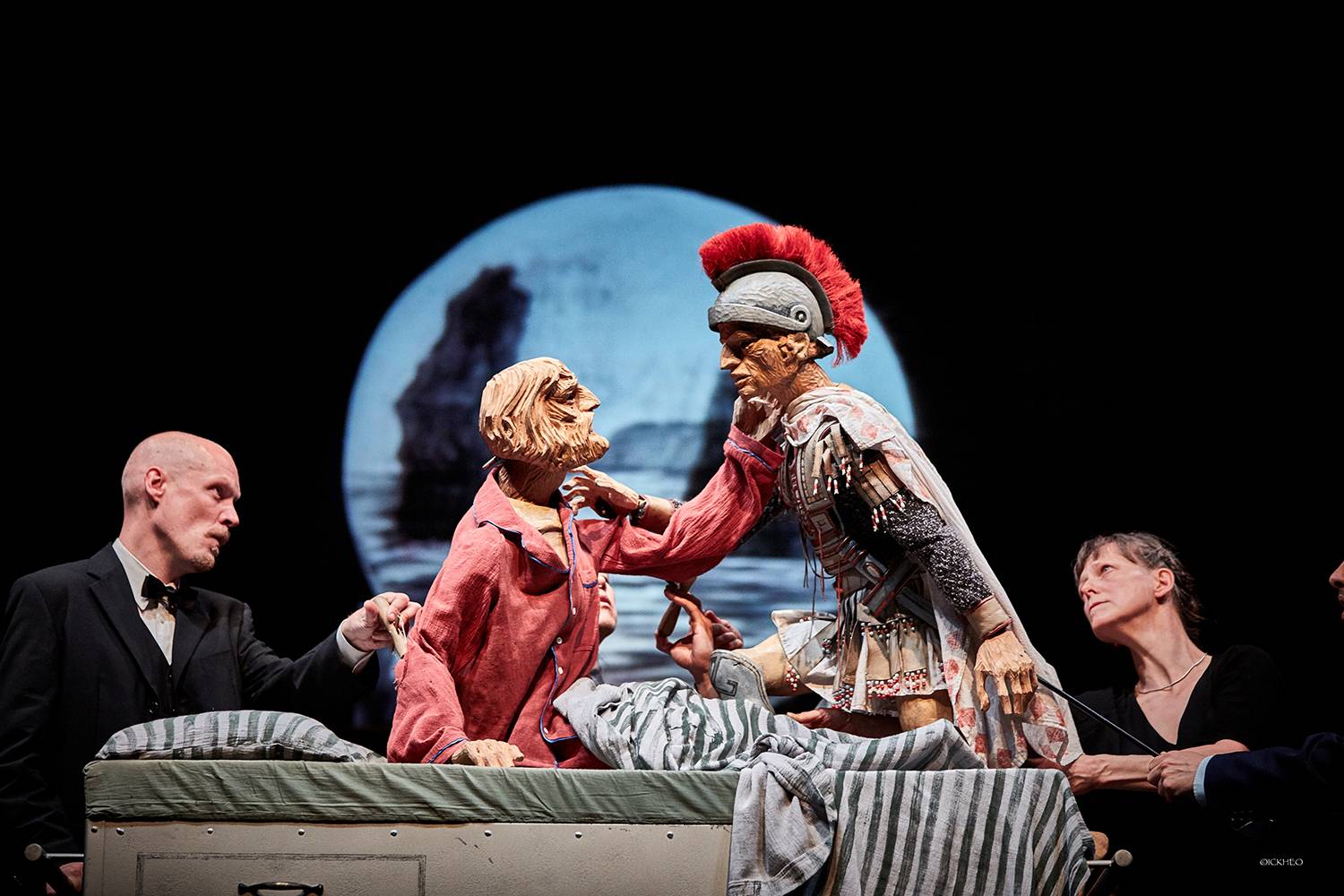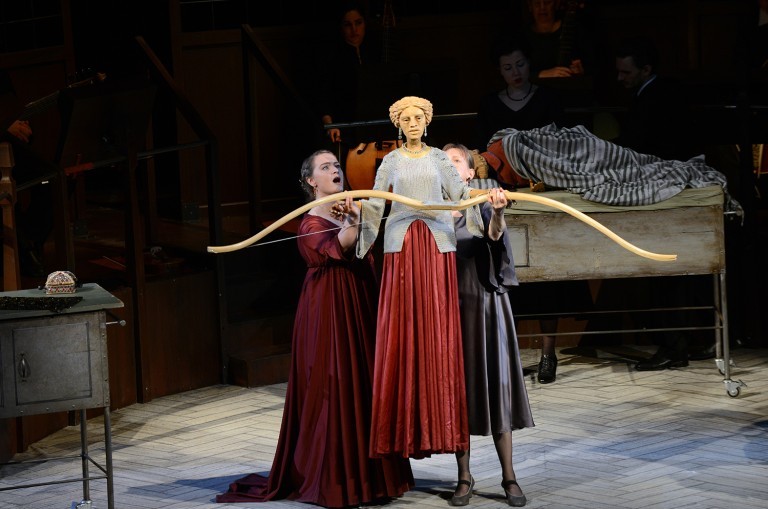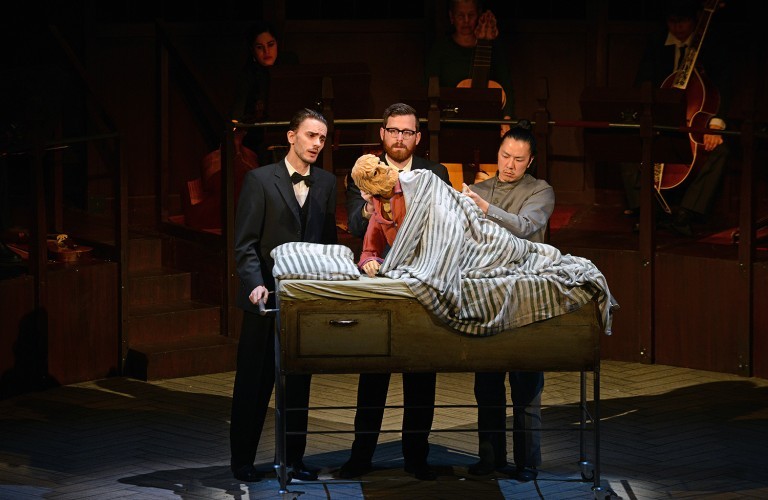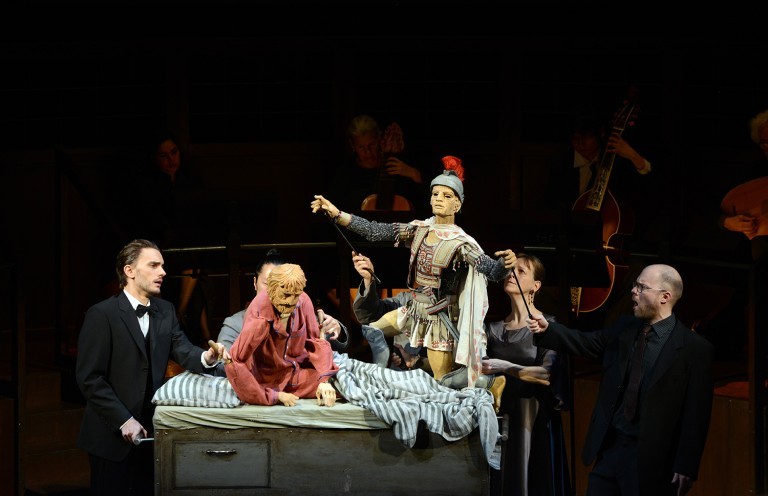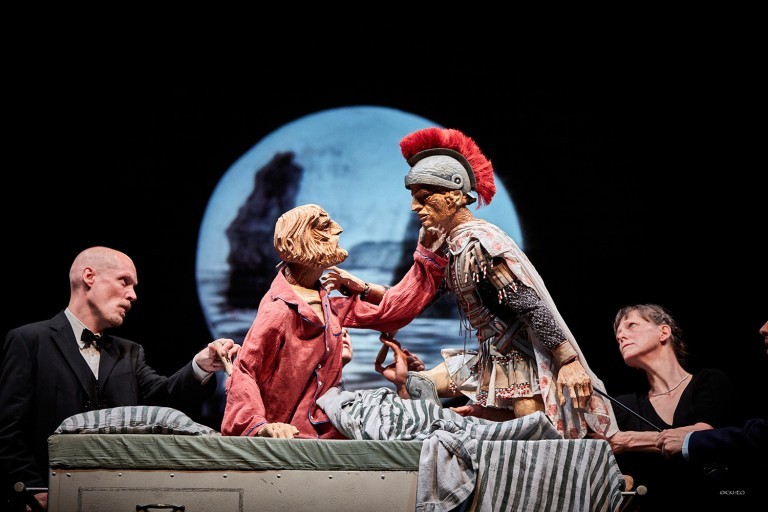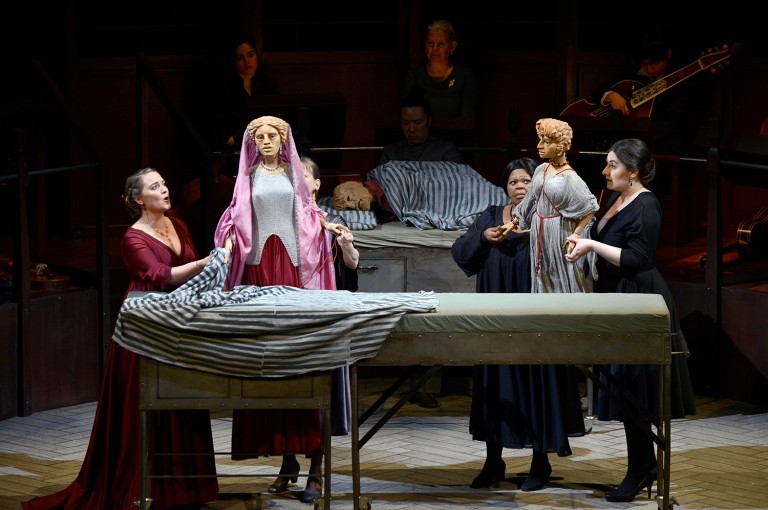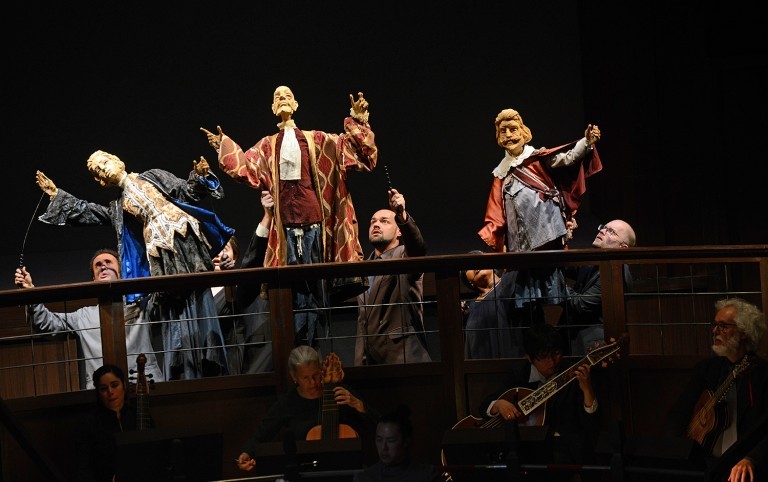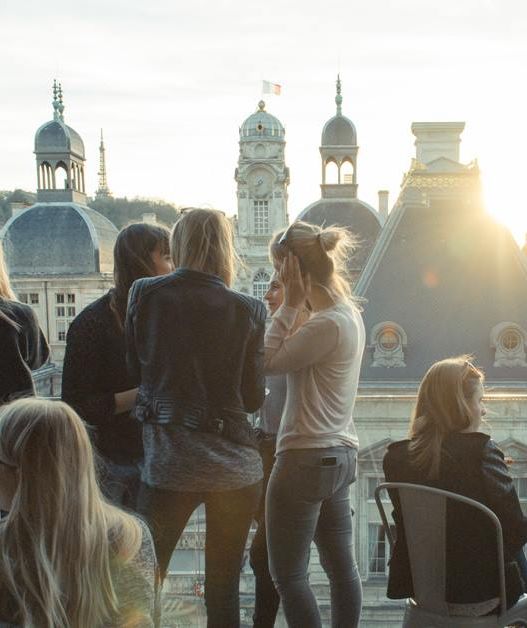Sculptures and designs
Founded in Cape Town in 1981, Adrian Kohler’s and Basil Jones’s Handspring Puppet Company has developed a multidisciplinary theatre with a strong visual dimension. It gained international renown thanks to its collaboration with William Kentridge on several shows (Woyzeck on the Highveld, 1992 ; Faustus in Africa, 1995; Ubu and the Truth Commission, 1997) in which the graphic work of the artist-director marks the emotional background of the action played out by large puppets made of raw timber. While the success of War Horse (2007) is continuing in New York City and London, the company is today reviving its legendary productions from the 1990s, alongside new productions.
An opera in its native state As the only opera staged by the Handspring Puppet Company, Il ritorno d’Ulisse is here presented in a condensed version, freed of its baroque ornamentation (ballet of the Moors, the flying chariot, etc.) and focused on its two protagonists : Ulysses and Penelope. In a wooden amphitheatre reminiscent of the first Renaissance theatres, singers and puppeteers bring to life characters with craggy faces. On the screen behind them other figures arise, which can be animal, vegetable or human, as well as landscapes, architectures or objects that Kentridge’s fusain highlights or obscures, opens out or transforms, as charcoal presences among which photographs are sometimes brought in. A flying owl accompanies Minerva, temples arise, and trees unfurl their foliage to express the love of these finally reunited spouses.
The memory of Ulysses These images are also visions of a soul on the verge of passing away. So it is that the prologue of the opera does not play on the allegories of Fortune, Love, Time and Human Fragility, as in the original libretto, but focuses on the doctors around the aged Ulysses’s bed: on the screen, drawings stand out against the background of an echography. At the moment of his death, the king of Ithaca recalls the story of his return, his fight against the suitors, and his reuniting with Penelope. There are thus sometimes two embodiments of Ulysses on stage: one, lying in bed and remembering, while the other is reliving his adventures one last time. Two views cross over one another, just as, on the stage, the Greek myth, the baroque age and the modern era, not so much to express the exploits of an ancient hero, but rather the suffering of people united by love, but whom destiny separated for so long.
 As of the 12th February, listen to talks about the show live or replayed
As of the 12th February, listen to talks about the show live or replayed
”Dramma in musica“ with a prologue and three acts, 1640
Libretto by Giacomo Badoaro
